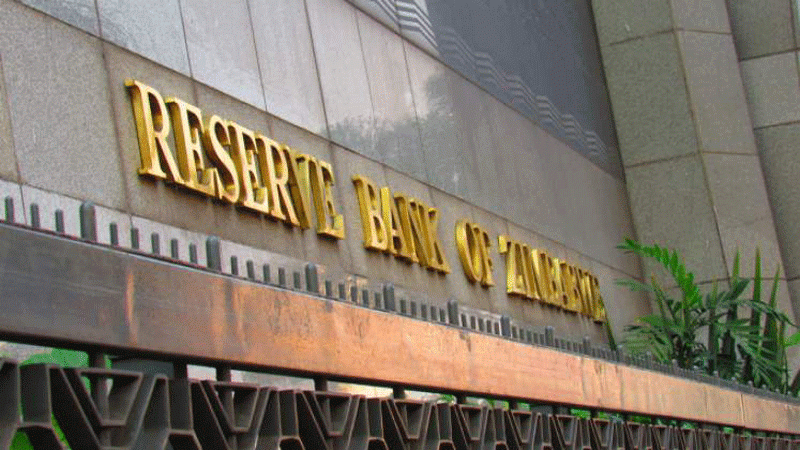
A renowned mathematician has revealed that despite holding billions of dollars in depositor funds, most local banks have failed to remain adequately capitalised and are on a very shaky ground.
An academic research paper titled Economic Capital as an Optimal Hedge against Bank Distress: Case of the Zimbabwean Banking Sector, covering 2010 to 2017, revealed that most banks were distressed or operating in the grey area in 2018.
The paper, presented at the inaugural Actuarial, Finance, Risk, and Insurance Congress (Afric) 2023 held in Victoria Falls last week, was co-authored by University of Eswatini’s department of mathematics lecturer Isabel Linda Moyo and other academics.
“We collected our data from the balance sheets of all banks and fitted a model that showed that the contributing factor to banks closing or being in distress, what you referred to as shaky, is due to capitalisation,” Moyo explained the findings to Standardbusiness.
“There was a capitalisation problem meaning to say that some banks kept little capital, and some banks kept too much capital, all those came at a cost.”
She added: “So, you find that yes, capital is needed for times like what we went through in 2008.
“When there is this shakiness, and the economy is unstable, the capital acts at least as a buffer so that the bank is not liquidated. So, the problem was failing to balance the two.
“How much capital should we have? You will find that with investors they want less capital because they want their investment to be working elsewhere, and then you find that the regulators, our RBZ (Reserve Bank of Zimbabwe), have their own level of capital that they require for a bank.”
- Open letter to President Mnangagwa
- Feature: ‘It’s worse right now than under Mugabe’: Sikhala pays the price of opposition in solitary cell
- Masvingo turns down fire tender deal
- Human-wildlife conflict drive African wild dogs to extinction
Keep Reading
The paper also found that banks’ economic capital (EC) and credit ratings were at inadequate levels.
Banks found to be in distress in 2018, according to the report, were Agribank (now AFC Commercial Bank), Metropolitan, POSB, ZB, and the National Building Society.
Financial institutions operating in the grey were BancABC, Barclays (now First Capital Bank Zimbabwe Limited, CABS (an Old Mutual subsidiary), CBZ, Ecobank, FBC, Nedbank Zimbabwe, NMB, Stanbic, Standard Chartered Bank Zimbabwe, and Steward Bank.
“The other main reason for bank failure was credit risk management.
“Banks use credit lending to get more interest and profit from people.
“So, the management that offers their credit lines differs across banks,” Moyo added.
An impeccable regulatory banking source noted that the problem with capital is that foreign banks were unwilling to interact with their local counterparts.
This has limited the free flow of forex in the market.
Foreign banks operating in Zimbabwe are Stanbic, Nedbank, BancAbc, and Ecobank.
“Why is Standard Chartered exiting this market?
“It is not specific to Zimbabwe; it is something that is arising because of where Standard Chartered is headquartered and the way the risk-based capital model that rules how financial institutions operate around the world,” the source said.
“If you are a CEO sitting at a bank that is headquartered in a particular jurisdiction, what matters to you?
“It is not making a political statement or wanting to punish some country somewhere.
“It is about what amount of capital you should keep sustaining the banking activities of your institution.
“If there are certain exposures that are exacerbating that, as are the recent developments in the global financial systems, it becomes even more problematic.”
The Bankers Association of Zimbabwe (BAZ) refuted claims of instability, although it confirmed banks were only lending forex based on availability.
“Official statistics from the RBZ indicate that aggregate banking sector loans and advances increased by 114,46% from $603,14 billion as of June 30, 2022, to $1,29 trillion as of December 31, 2022,” BAZ said in emailed responses.
“The increase was largely attributed to an increase in foreign currency denominated loans, leading to an increase in their proportion from 65,87% as of June 30, 2022, to 78,20% of total banking sector loans.”
It added: “The level of financial intermediation, as measured by the total loans-to-deposit ratio, improved from 52,83% as of June 30, 2022, to 55,67% as of December 31, 2022.
“Lending in US dollars is limited to what is available, considering that foreign currency is a scarce resource.
“Banks can only lend what is available, taking into consideration the ability to repay in foreign currency.
“Therefore, lending in forex is limited to those with the capacity to generate forex revenue.
“In terms of viability, the financial sector is safe and sound, as depicted by all the financial indicators as published in the 2023 monetary policy statement.”










